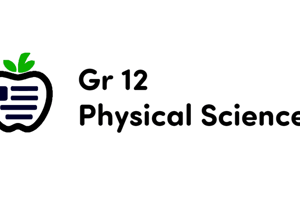Podcast
Questions and Answers
What type of chemical formula shows the actual number of atoms in a compound?
What type of chemical formula shows the actual number of atoms in a compound?
- Molecular formula (correct)
- Empirical formula
- Structural formula
- Atomic formula
Which type of chemical formula is derived from mass analysis and shows the lowest number of moles?
Which type of chemical formula is derived from mass analysis and shows the lowest number of moles?
- Empirical formula (correct)
- Molecular formula
- Structural formula
- Molar formula
What does the term 'atomic weight' refer to?
What does the term 'atomic weight' refer to?
- Relative atomic masses based on the atomic mass unit (correct)
- Number of protons in an atom
- Exact number of atoms in a compound
- Molar mass of a compound
What is the relationship between the mass of one mole of atoms of a pure element and the atomic weight of that element?
What is the relationship between the mass of one mole of atoms of a pure element and the atomic weight of that element?
Which unit is used to represent the amount of substance?
Which unit is used to represent the amount of substance?
Which step is involved in determining the percent composition of a compound?
Which step is involved in determining the percent composition of a compound?
What does the empirical formula show about a compound?
What does the empirical formula show about a compound?
In chemical equations, where are the products usually written?
In chemical equations, where are the products usually written?
What method is used to balance chemical equations?
What method is used to balance chemical equations?
In terms of chemical formulas, what does the term 'molecular models' refer to?
In terms of chemical formulas, what does the term 'molecular models' refer to?
Which type of physical evidence can indicate a chemical change?
Which type of physical evidence can indicate a chemical change?
What must be adjusted to balance a chemical equation?
What must be adjusted to balance a chemical equation?
What does Avogadro's number represent?
What does Avogadro's number represent?
What is the main difference between formula weight and molecular weight?
What is the main difference between formula weight and molecular weight?
How is molar mass related to Avogadro's constant?
How is molar mass related to Avogadro's constant?
When calculating formula weight, what is considered?
When calculating formula weight, what is considered?
What is always true about the molecular weight of a substance?
What is always true about the molecular weight of a substance?
Flashcards are hidden until you start studying
Study Notes
Chemical Formulas
- Represent the composition of molecules and compounds in terms of chemical symbols
- Show the elements present and the ratio in which atoms of the elements occur
Types of Chemical Formulas
- Molecular Formula: shows the actual number of atoms in a compound
- Empirical Formula: derived from mass analysis, shows the lowest number of moles (relative number of atoms of each element)
- Structural Formula: shows the actual number and order of atoms connected in a compound, including relative placement and connections
Molecular Models and Atomic Weight
- Atomic weights are relative atomic masses based on the atomic mass unit (amu)
- The mole (mol) is the SI unit for amount of substance, defined as the amount of a substance containing the same number of entities as the number of atoms in 12 g of carbon-12
Avogadro's Number and Molar Mass
- Avogadro's number: 6.02214076 × 10^23, tells the number of particles in 1 mole of a substance
- Molar mass of an element: the mass of one mole of atoms of a pure element in grams, numerically equal to the atomic weight of that element in atomic mass units
Formula Weight and Molecular Weight
- Formula weight: sum of atomic weights for the atoms in a chemical formula, used for ionic or molecular substances
- Molecular weight: sum of atomic weights of the atoms in a molecule, used for molecular (nonionic) substances
Determining Molar Mass and Percentage Composition
- Steps to determine molar mass and percentage composition: determine formula weight/molecular weight, calculate percentage composition, determine molar volume, and derive formulas from elemental composition
Chemical Equations and Balancing
- Chemical equations: representation of how a chemical change occurs, with reactants on the left and products on the right
- Balancing equations: translate the statement, balance the atoms, adjust the coefficients, and check the equation
Chemical Evidence
- Types of physical evidence: color change, formation of a solid (precipitate), evolution of gas, and evolution or absorption of heat
Studying That Suits You
Use AI to generate personalized quizzes and flashcards to suit your learning preferences.




